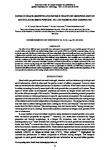Fatigue crack growth and fatigue fracture morphology of recycled rubber powder filled NR/BR blend compound
| dc.contributor.author | Abang Ismawi Hassim, DH | |
| dc.contributor.author | Abraham, Frank | |
| dc.contributor.author | Summerscales, John | |
| dc.date.accessioned | 2020-01-28T09:00:21Z | |
| dc.date.issued | 2020-12-31 | |
| dc.identifier.issn | 0035-9475 | |
| dc.identifier.issn | 1943-4804 | |
| dc.identifier.other | RCT-19-C-569R | |
| dc.identifier.uri | http://hdl.handle.net/10026.1/15347 | |
| dc.description | FA as the author who submitted the manuscript took VL and despite repeated requests has not provided the final manuscript to permit submission to PEARL! | |
| dc.description.abstract |
The effect of two different types and particle sizes (micronised cryo-ground 74 m or ambient ground 400 m) of recycled rubber powder (RRP) were studied during fatigue crack growth (FCG) in NR/BR compound using a fracture mechanics approach. Absolute and relative hysteresis losses using single-edge notch tensile (SENT) specimens were determined with a displacement controlled strain compensating for permanent set of the samples throughout the FCG experiments. Differences in relative hysteresis loss showed that additional energy dissipation, due to multiple new crack surfaces at the crack tip, contributes to the FCG of the RRP compounds. At higher tearing energy, beside other factors affecting the FCG performance of the RRP compounds, both higher absolute and relative hysteresis loss are slightly detrimental to the crack growth rates. At lower tearing energy, the larger RRP filled compound showed slower, but not significant different crack growth rates, than in unfilled NR/BR control compound. Fracture morphologies for NR/BR and RRP filled compound had different fracture surface topography at various tearing energies, which revealed the dependency of the crack growth microstructure on the tearing energies. | |
| dc.format.extent | 86-107 | |
| dc.language | en | |
| dc.language.iso | en | |
| dc.publisher | American Chemical Society | |
| dc.title | Fatigue crack growth and fatigue fracture morphology of recycled rubber powder filled NR/BR blend compound | |
| dc.type | journal-article | |
| dc.type | Journal Article | |
| plymouth.author-url | https://www.webofscience.com/api/gateway?GWVersion=2&SrcApp=PARTNER_APP&SrcAuth=LinksAMR&KeyUT=WOS:000681745300005&DestLinkType=FullRecord&DestApp=ALL_WOS&UsrCustomerID=11bb513d99f797142bcfeffcc58ea008 | |
| plymouth.issue | 1 | |
| plymouth.volume | 94 | |
| plymouth.publication-status | Published | |
| plymouth.journal | Rubber Chemistry and Technology | |
| dc.identifier.doi | 10.5254/rct.20.80440 | |
| plymouth.organisational-group | /Plymouth | |
| plymouth.organisational-group | /Plymouth/Faculty of Science and Engineering | |
| plymouth.organisational-group | /Plymouth/Faculty of Science and Engineering/School of Engineering, Computing and Mathematics | |
| plymouth.organisational-group | /Plymouth/REF 2021 Researchers by UoA | |
| plymouth.organisational-group | /Plymouth/REF 2021 Researchers by UoA/UoA12 Engineering | |
| plymouth.organisational-group | /Plymouth/Research Groups | |
| plymouth.organisational-group | /Plymouth/Research Groups/Marine Institute | |
| plymouth.organisational-group | /Plymouth/Users by role | |
| plymouth.organisational-group | /Plymouth/Users by role/Academics | |
| dcterms.dateAccepted | 2019-10-07 | |
| dc.rights.embargodate | 2021-1-23 | |
| dc.identifier.eissn | 1943-4804 | |
| dc.rights.embargoperiod | Not known | |
| rioxxterms.versionofrecord | 10.5254/rct.20.80440 | |
| rioxxterms.licenseref.uri | http://www.rioxx.net/licenses/all-rights-reserved | |
| rioxxterms.licenseref.startdate | 2020-12-31 | |
| rioxxterms.type | Journal Article/Review |


